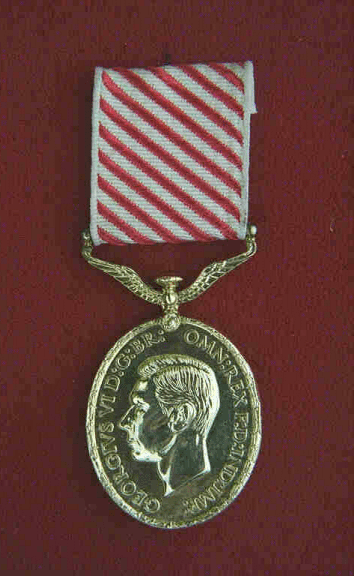Context
This medal was instituted on 03 June 1918.
Eligibility and Criteria
The Air Force Medal (AFM) is awarded to non-commissioned officers and non-commissioned members for an act or acts of valour, courage or devotion to duty performed whilst flying, though not in active operations against the enemy.
Description
An oval, silver medal, 1.375 inches wide. For mounting a bomb is attached to the bar and ribbon by two wings.
Obverse:
- King George V: A bareheaded coinage effigy, facing left, and the legend: GEORGIVS V BRITT: OMN: REX ET IND: IMP:
- King George VI: A bareheaded coinage effigy, facing left, and the legend: GEORGIVS VI D: G: BR: OMN: REX F. D: IND: IMP:
- Queen Elizabeth II: A bareheaded effigy, facing right, with the legend: ELIZABETH II DEI GRATIA REGINA FID: DEF:
On the reverse, a wreath of laurel, Hermes (facing right) is shown, mounted on a hawk in flight and bestowing a wreath. The date 1918 appears behind Hermes on the King George VI and Queen Elizabeth II medals. The year of the award is engraved on the reverse.
The ribbon is 1.25 inches wide, and consists of alternate red and white stripes leaning 45 degrees to the left. A red stripe is to appear in the bottom left and upper right corners when viewed on the wearer's chest. Until 1919, the stripes were horizontal.
Bars
A straight slip-on silver bar is awarded for a further act that would have warranted the medal. The year it was awarded is engraved on the reverse.
Historical Notes
- The medal is engraved with the service number, rank, initials, surname and service of the recipient. The engraving was very crude due to the convex nature of the edge of the medals. During the First World War the medal was impressed.
- There were 40 AFMs awarded to Canadians (no bars).
